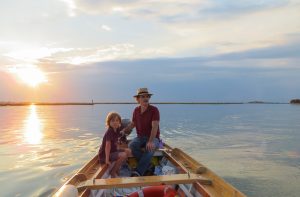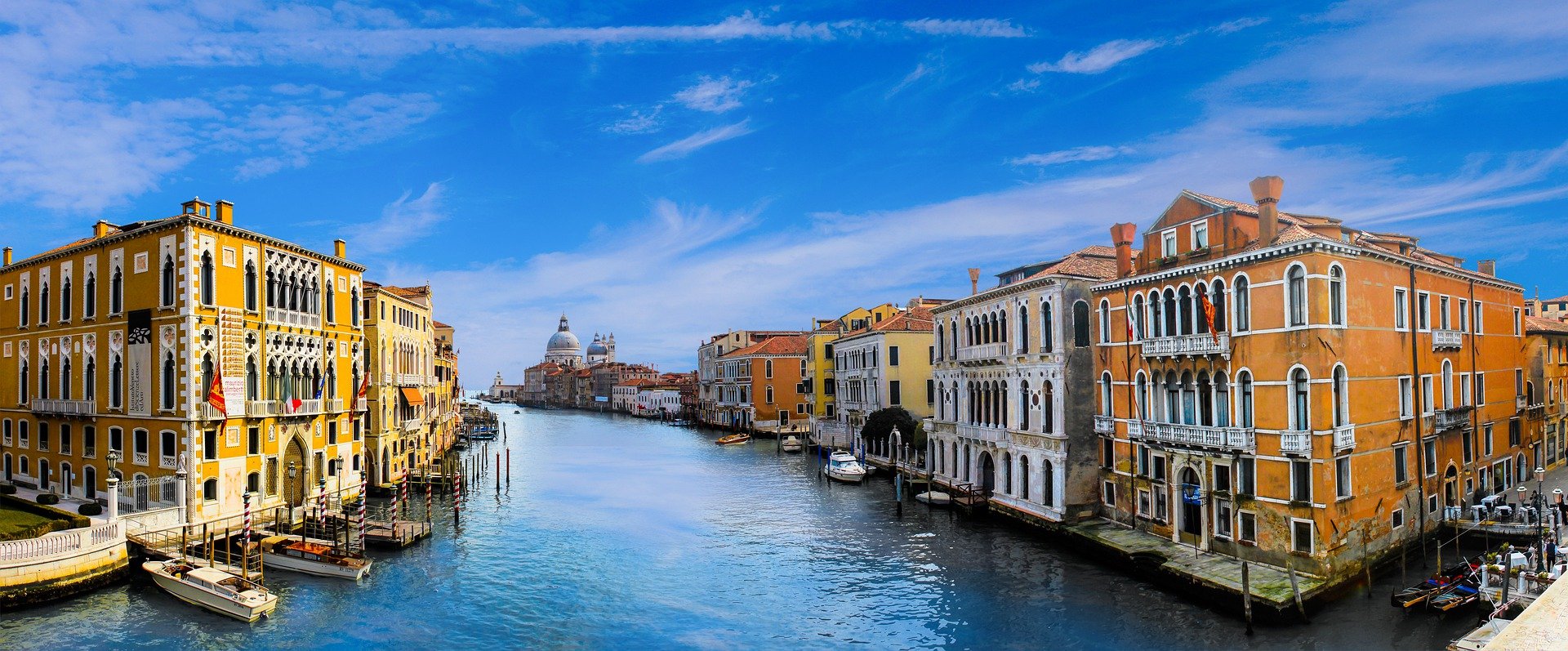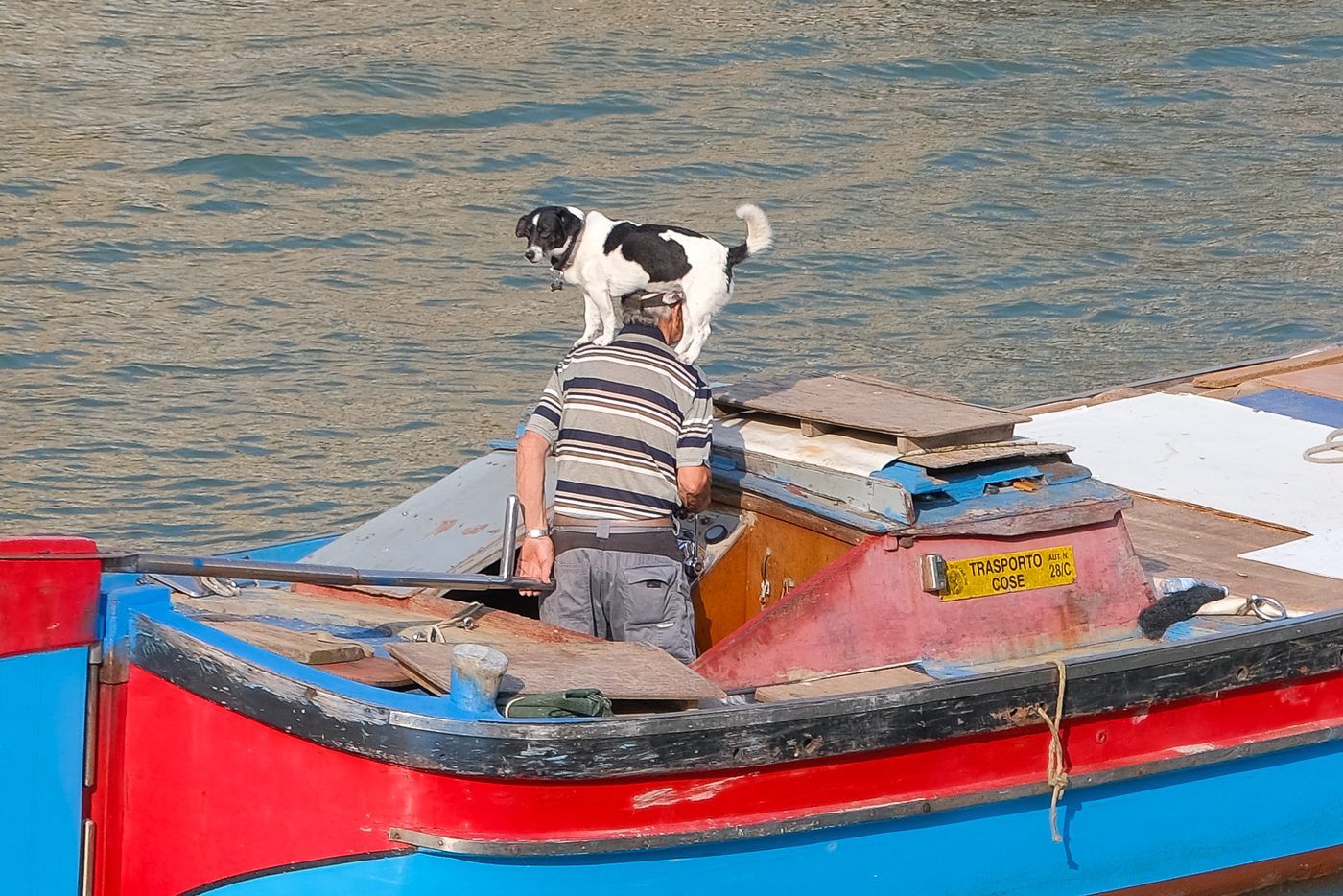“I must count as half-lost the year I spent in Venice before I took a house upon the Grand Canal,” wrote the once-influential American writer and editor William Dean Howells. “There alone can existence have the perfect local flavor.”
Though Venetian Life, Howells’s account of the fours years he spent in Venice as American ambassador beginning in 1861, remains one of the most insightful and entertaining English-language depictions of daily life in the city in the 19th century, living on the Grand Canal ain’t what it used to be. A friend who happens to live in an apartment right next door to the small palazzo on the Grand Canal where Howells lived complains that a massive tourist presence has wiped out whatever trace of “local flavor” could still be found there even 20 years ago. Now, according to a broad array of our Venetian friends, much of “local flavor” has fled to the water. As one native-born and bred friend put it, “There are two different Venices: one that you experience on foot and on the vaporetto (water bus), another that requires your own boat.” He told me this over three years ago and, though I believed him, I did everything I could to work around it until very recently.
First, by joining a remiera (or rowing club) and learning to row in the Venetian style: standing up and facing forward. For an annual membership fee of just 135 euros I eventually acquired not only the ability to row, but my own set of keys to the club’s cavernous home within the famous ancient walls of the city’s Arsenale, or extensive old ship-building facility.
There, a whole array of traditional Venetian boats were at my disposal, with each forcola (or oar lock) a graceful wood sculpture requiring years of training to learn to handcraft, each single hand-made remo (oar) worth more than the cost of my year’s membership. Lacking the Italian language skills I wish I had, I’ve found that I can manage to salvage a fair amount of respect from locals by mentioning that I’m able to row “alla Valesana”. That is, alone, standing up and facing forward, with two crossed oars at once in a way that many natives admit they never quite got the hang of.
Much as I love rowing, though—and the fact that, as a native friend who’s been rowing for over 40 years said, “each time out on the lagoon you learn something new”—in contemporary Venice’s fast-paced, motorized and wake-filled world, it is more a form of exercise or sport than practical daily transportation.
My wife, Jen, learned to row as well, and our now six-year-old son, Sandro, even got down the basics. But this didn’t stop them from saying, whenever the subject arose, “We need a small motor boat.” (Or, according to Sandro, an extremely large heavy-duty iron work boat, with crane: a mototopo. But that’s another story.)
“No, we don’t really need it,” I’d reply. “We can get around on foot perfectly well, nothing’s too far away. The vaporetti are the most pleasant public transportation in the whole world.

And we get to go on friends’ boats, and never have to worry about a mooring place or our motor breaking down. It’s not a question of need at all.” (Though I should note here something I never admitted to them: that while the Italian government levies a tax on boats in most places in the country as something of a luxury item, in Venice they are officially designated as a necessary means of transportation, and therefore exempt.)
In fact, I was worried by something another Venetian friend had told me three years ago. To own a boat, he said, one needs “tanta passione e tanti soldi” (a lot of passion and a lot of money).” I never doubted we’d muster more than enough of the former; it was the latter that gave me pause.
But two and a half weeks ago, after much research, many hesitations, endless queries and even more doubts (at least on my part, if not Jen’s and Sandro’s), we bought a small traditional-style wood Venetian boat: a sanpierota. So named because of its origin in San Pietro in Volta on the lagoon island of Pellestrina, a sanpierota typically measures from about 6 to 7 meters, is flat-bottomed, and can be rowed, sailed or driven with an outboard motor.
According to the beautifully-produced bilingual book Le Barche di Venezia/The Boats of Venice, by Riccardo Pergolis and Ugo Pizzarello (Libreria Editrice), the qualities of the sanpierota that have made it one of the few traditional Venetian wood boats to survive amid the greater convenience of fiberglass are its “sturdiness, reliability, roominess and relatively simple maintenance, which make it ideal as a family boat.”

A vintage sanpierota built in one of the lagoon’s well-known cantiere (or workshops) can cost from 8,000 to more than 11,000 euro, but ours was built from a kit by an anonymous craftsman on Lido just four years ago of compensato marino (or marine plywood), which is lighter and more convenient than wood and makes it a pleasure to row, and a perfect match for a 6 horsepower engine. For us it seemed like the perfect combination of tradition, convenience and economy.
To operate a boat with a motor of less than 40 horsepower in the lagoon there is no need for a license. For a boat with a motor of less than 9.9 horsepower, no need to register it. “Ah, yes, with a boat,” another Venetian friend once told me, “you would really be free.” And so it seemed the other evening as we ate dinner in our boat between two barene (mudflats) out in the north lagoon, tied to our two oars plunged in the mud, far from the tourists swarming like ants over the historic center.
But just as pleasant as any sense of freedom is a sense of connection. Sandro, for one, is as ecstatic about doing the kind of maintenance many boat owners complain of as he is about driving the boat. Our cover proved to be no match for last night’s torrential rains and six inches of water now slosh about the bottom of our boat? Fantastic! He goes at the job of bailing and sponging as if they were the sole reasons one buys a boat. Some bugs have taken up residence under our cover and are leaving brown droppings on our boat’s white ribbed interior? Excellent! We can spend an hour scrubbing them all off as the boat bobs in its moorings. The more we labor on it, the more the boat seems to become our own.

For centuries people have come to Venice for the views. It is, as countless people have said and written and sighed, a great feast for the eyes, with its grand facades and reflections and sparkles. But a boat puts you quite literally into the city’s current, more in thrall to the wind and the weather than you are free to escape to the lagoon’s quiet spaces. Along with anything else it might offer, life with a boat seems so far to be a full-body experience. Not just a matter of looking in this most picturesque of cities, it seems to involve an interplay of duty and liberty that feels more like living in this very particular place.
For more about living in Venice, visit Steven Varni’s blog: veneziablog.blogspot.com































